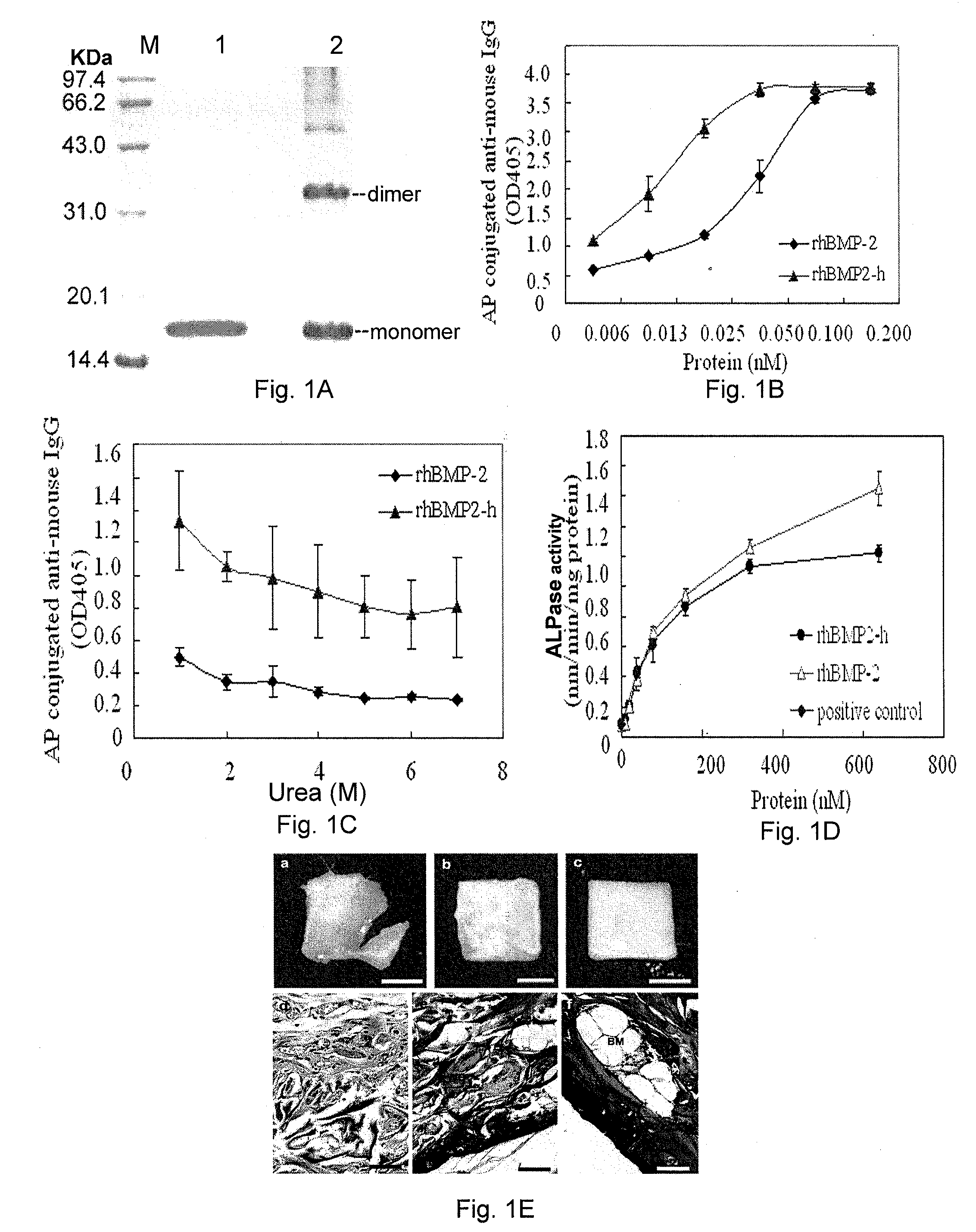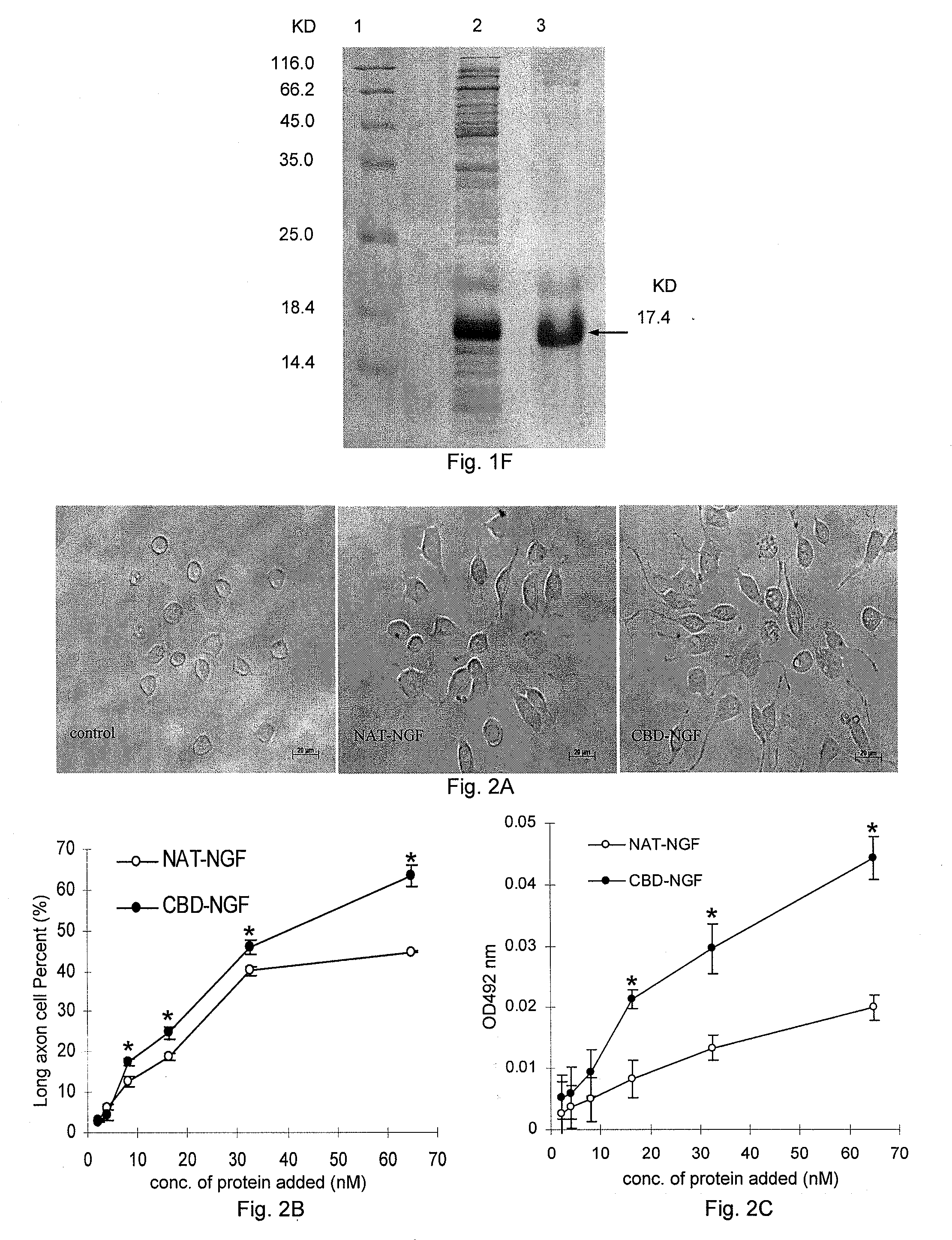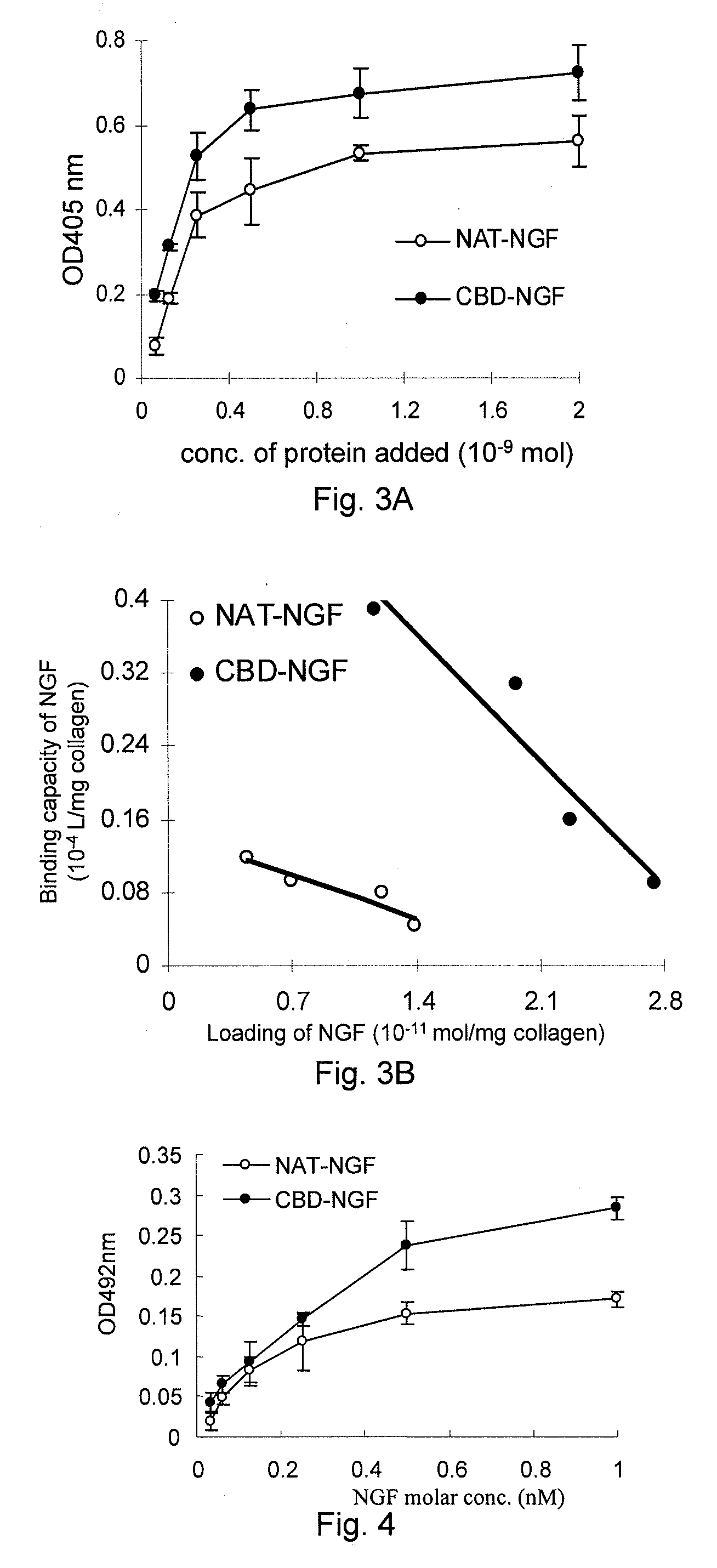Activated collagen scaffold materials and their special fused active restoration factors
a technology of active collagen and scaffold materials, which is applied in the direction of prosthesis, drug compositions, peptides, etc., can solve the problems of micro-osmotic pump rejection reaction and poor absorption in vivo, difficult to solve vector selection and safety issues for gene therapy, and high treatment cos
- Summary
- Abstract
- Description
- Claims
- Application Information
AI Technical Summary
Benefits of technology
Problems solved by technology
Method used
Image
Examples
example 1
Cloning, Expression, Purification and Function Identification of the Gene Encoding the Fused Active Restoration Factors which has the Ability of Specifically Binding to Collagen
[0059]I. Cloning, Expression and Purification of the Gene Encoding the Fused Active Restoration Factor Bmp2, which has the Ability of Specifically Binding to Collagen
[0060]1. Cloning of the Gene Encoding the Fused Active Restoration Factor BMP2, which has the Ability of Specifically Binding to Collagen and Construction of its Expression Vector
[0061]PCR amplification primers were designed according to the known cDNA sequence of human BMP2 (hBMP2) (GenBank Accession No.: 50), and the coding sequence of collagen binding domain (CBD) “TKKTLRT” (SEQ ID NO: 1 in the Sequence Listing) was introduced into the forward primers. The primer sequences are as follow:
hBMP2F1 (forward primer):5′-TACCGGTAGCGCGGGCAGTGCTGCGGGTTCTGGCGGTGTCGACCAAGCCAAACAC-3′hBMP2F2 (forward primer):5′-CCGCATATGACTAAGAAAACCCTGCGTACTGGTACCGGTAGC-3′...
example 2
Cloning, Expression, Purification and Function Identification of the Gene Encoding the Fused Active Restoration Factors β-NGF which has the Ability of Specifically Binding to Collagen
[0078]I. Cloning, Expression and Purification of the Gene Encoding the Fused Active Restoration Factor β-NGF, which has the Ability of Specifically Binding to Collagen
[0079]1. Cloning of the gene encoding the fused active restoration factor β-NGF, which has the Ability of Specifically Binding to Collagen and Construction of its Expression Vector
[0080]1) Primer Design
[0081]Three forward primers (CBDU, NGFU1, and NGFU2, referring to Table 1 for their sequences) and two reverse primers (CBDD and NGFD, referring to Table 1 for their sequences) were designed using Primer premier 5.05 software, wherein CBDU (introducing a recognition site of restriction endonuclease NdeI) and CBDD (introducing a recognition site of restriction endonuclease HindIII) were used to amplify the coding sequences of collagen binding...
example 3
Cloning, Expression, Purification and Function Identification of the Gene Encoding the Fused Active Restoration Factor PDGF-BB (Platelet-Derived Growth Factor) which has the Ability of Specific Binding to Collagen
[0091]I. Cloning, Expression and Purification of the Gene Encoding the Fused Active Restoration Factor PDGF-BB, which has the Ability of Specifically Binding to Collagen
[0092]1. Cloning of the gene encoding the fused active restoration factor PDGF-BB, which has the Ability of Specifically Binding to Collagen and Construction of its Expression Vector
[0093]1) Primer Design
[0094]Three forward primers (CBDU, PDGFU11, and PDGFU21, referring to Table 2 for their sequences) and two reverse primers (CBDD and PDGFD1 referring to Table 2 for their sequences) were designed using Primer premier 5.05 software as an assistance, wherein CBDU (introducing a recognition site of restriction endonuclease NdeI) and CBDD (introducing a recognition site of restriction endonuclease HindIII) were ...
PUM
| Property | Measurement | Unit |
|---|---|---|
| temperature | aaaaa | aaaaa |
| dissociation constants Kd | aaaaa | aaaaa |
| dissociation constants Kd | aaaaa | aaaaa |
Abstract
Description
Claims
Application Information
 Login to View More
Login to View More - R&D
- Intellectual Property
- Life Sciences
- Materials
- Tech Scout
- Unparalleled Data Quality
- Higher Quality Content
- 60% Fewer Hallucinations
Browse by: Latest US Patents, China's latest patents, Technical Efficacy Thesaurus, Application Domain, Technology Topic, Popular Technical Reports.
© 2025 PatSnap. All rights reserved.Legal|Privacy policy|Modern Slavery Act Transparency Statement|Sitemap|About US| Contact US: help@patsnap.com



